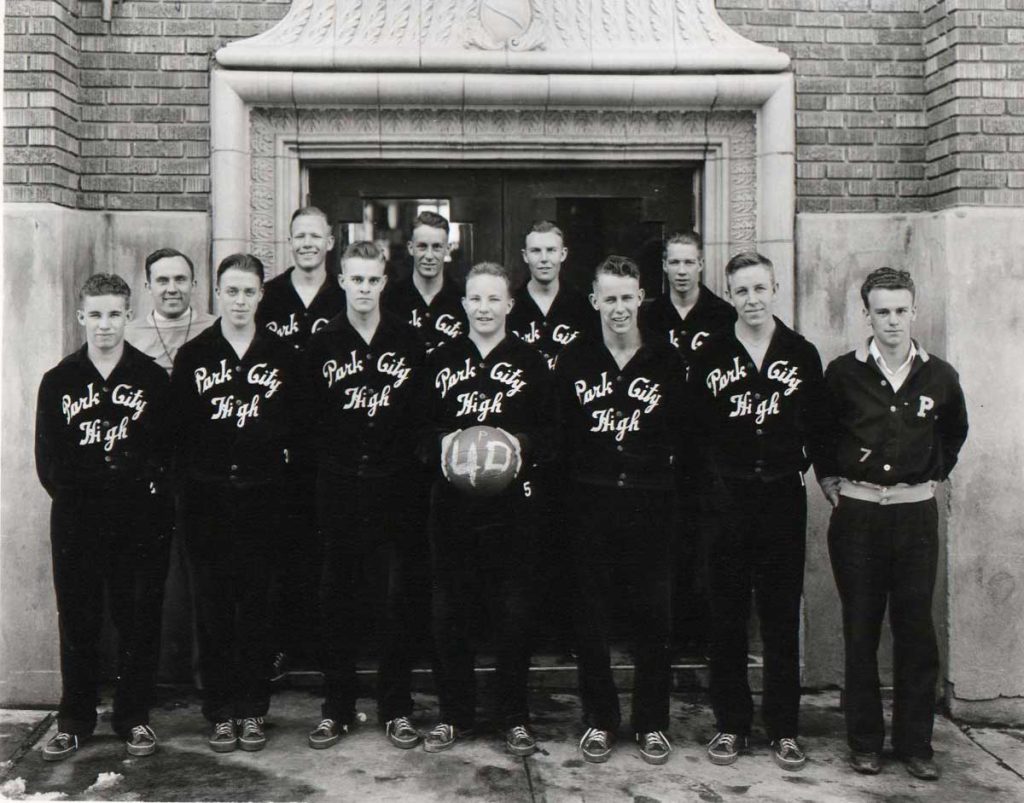Content warning for description of injuries.
The Park City Museum’s Annual Historic Home Tour returns on June 17 after a three-year hiatus. This year’s tour covers homes and buildings on lower Park Avenue, from the 1100 block to the 1300 block.
Most of the homes housed mining men and their families. As a dangerous profession, tragic loss of life was not uncommon. The Miners’ Hospital at 1354 Park Avenue, which is part of the tour, has obviously seen the most death on the street, but two tragedies approximately ten years apart stand out from the homes on the tour this year.
At 1304 Park Avenue, tragedy found the doorstep of the Cunnington family (the second owners of the home) in 1913. William Cunnington (a.k.a. Willie or Billy) worked as a night watchman for the Silver King Coalition Mines Company. He and his wife Drucilla had at least four children.
On April 26, 1913, William was walking home from work, where his route likely would have taken him from the Silver King Mine down King Road, then a left turn onto Park Avenue where he would then travel almost exactly one mile home – that is if he was a watchman up at the Silver King Mine. If he was a watchman at the Silver King Coalition Building along Park Avenue, rather, his walk would have been about four tenths of a mile.
It’s not clear where he started his walk home, but he was apparently nearby the Denver & Rio Grande depot (now Harvest) on the 800 block of Park Avenue, just on the edge of the Silver King Coalition Building, when he attempted to hop aboard an ore car pulled by horses that was heading down Park Avenue toward his home. He unfortunately slipped and fell under the 18,950-pound loaded car, which proceeded to run over his lower left leg and right foot (turning the foot into “jelly” according to the Park Record).
His legs were crushed, causing massive blood loss, and doctors were unable to perform any emergency surgery in his delicate condition – back then, they would not have had any blood on hand to perform a major surgery like amputation or trying to fix the legs and foot; They would have needed someone with a compatible blood type to sit alongside the surgery for a blood transfusion. He passed away later that night. His obituary in the Park Record noted “He was a devoted husband and father and an industrious and good citizen.”

Credit: Park City Historical Society & Museum, Pop Jenks Collection
Just up the street, 1280 Park Avenue only saw one family in its original historic period. Frank Dejonghe, a Belgian immigrant, purchased the property in 1905. He lived in the home with his wife Mary and their eight children.
Frank worked as a timberman (someone who installed the supports and beams to hold up the walls and ceiling of a mine tunnel and keep them from collapsing). He originally worked for over a decade with the Judge Mining & Smelting Company, leaving that company and becoming an independent contractor in 1922.
On Augusts 7, 1923, just over ten years after William’s accident, Frank was working in a section of the Judge Mine being leased by another group when one of the timbers he was installing slipped and allowed a large slab of rock to fall from the ceiling of the mine tunnel. It crushed and killed him instantly. In his obituary, the Park Record noted that “He was held in high esteem by his employers and was an industrious, dependable workman and a good citizen…”
Learn about these men and their families, plus several others, along with historic architecture, at the Park City Museum’s Annual Historic Home Tour. The tour goes from 10 a.m. to 2 p.m. and features thirteen buildings. 1304 Park Avenue is featured in the brochure but will not be accessible to view inside. Learn more and purchase tickets at https://parkcityhistory.org/event/annual-historic-home-tour-2023/.